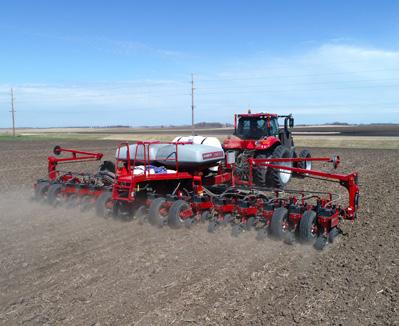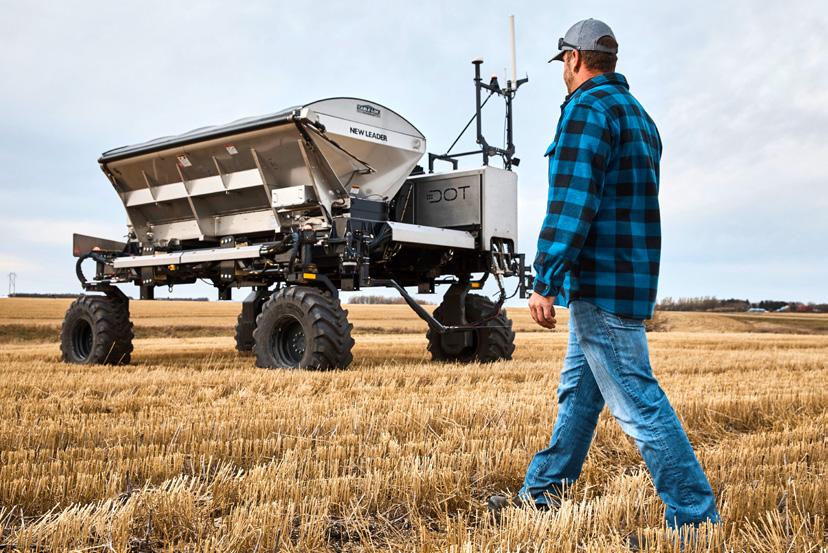
5 minute read
The Voice of Ag in Unison

In addition to a global pandemic and a hotly-contested Presidential election, the year 2020 will be remembered for another milestone: the year South Dakota agricultural organizations came together to tell a unified story.
Advertisement
UNITING AG SPONSORS
SD Soil Health Coalition SD Soybean SD Ag Foundation SD Dept of Tourism Midwest Dairy SD Wheat Commission SD Dept of Agriculture Sioux Falls Chamber of Commerce SD Sheep Growers Association SD No-Till Association SD Stockgrowers Association SD Farm Bureau Federation Farm Families SD Grassland Coalition SD Cattleman’s Association Central Plains Dairy Foundation SD Association of Conservation Districts SD Agricultural & Rural Leadership SD Farmers Union SD Pork Producers Council SDSU Elevate Rapid City SD Poultry Industry Association SD Association of Cooperatives SD Dept of Natural Resources SD Retailers Association
The media reports that followed the outbreak of COVID-19 were not positive for agriculture. Stories of dairies dumping milk when schools and restaurants closed, animals euthanized for lack of processing capability, and store shelves that were void of some food products scared consumers. Independent surveys noted that 75-80% of consumers believed the pandemic exposed a fundamental flaw in the U.S. food system that needed to be addressed.
And yet, as spring turned to summer, you saw agriculture at work across South Dakota. The sight of cattle grazing and planters crossing the fields seemed in direct contrast to what we were hearing in the news. The fact is there was a ripple in the food chain when the pandemic reached America. The chain wasn’t broken; it was interrupted. But let’s face it, that’s a hard story to tell to the average shopper who struggles with understanding that milk doesn’t originate from the cooler in the back of the store. It was time to change the narrative.
That narrative started to change when a couple ag groups saw an opportunity to get out the message that agriculture is still growing strong. They called a meeting of agricultural stakeholders: commodity groups, financial institutions, conservation organizations, educators, government agencies, and advocacy groups. Those stakeholders formed a task force to hire an advertising agency from South Dakota with the goal of getting the positive message out to the consumer.
As with any new endeavor, the effort took longer than expected to launch. How could all these entities agree on messages and images that tell the all-encompassing story of the “web” of agriculture working together: growers, processors, truckers, grocery stores, food banks, restaurants – the thousands of people who bring food from the field to the table and make South Dakota great? How could we start to get the consumer to understand how social, economic and natural factors disrupt one sector, causing everyone to feel the ripple effect?
It was possible and it’s happening. The Unified Ag Story will premier early in 2021 with a foundational video, website, and television commercials.
So stay tuned – South Dakota agriculture is unified and has a dynamic story to share. And we’ll tell it together.
~ Don Norton, Chairman of the Uniting Ag Media Campaign

NEXT LEVEL SOYBEAN PRECISION

In the relentless pursuit of increased farm efficiency and profitability, Mustang Seeds will be piloting an innovative crop management technology designed specifically for soybeans. Optimus was developed by Mustang Seeds’ sister company GDM and will be used on a pilot scale in 2021.
“Optimus is a recommendation engine that GDM is developing since 2019 and currently being tested in Argentina and Brazil, doing variable rate population prescriptions on soybeans,” says Mustang Seeds CEO Terry Schultz. “Optimus does variable rate populations, variable rate nutrition recommendations for soybeans and also, if growers have dual hybrid planter, it will help with recommendations for dual varieties on soybeans as well.”
In addition to using the Optimus program in South America, GDM is developing a breeding program since more than a decade in US.
“We are going to take that data to make recommendations for our piloted Mustang growers in 2021,” Schultz says.
Variable rate technology is familiar to many growers, but to this point, most efforts have focused on corn production. Optimus is a recommendation engine built for soybeans that will deliver variable rate prescriptions for each environment.
“There are a lot of farmers using variable rate for corn planting, but it’s rare that you hear of someone using it for soybean planting,” explains Mustang Seeds Precision Ag Specialist Grant Schmieg. “It’s interesting to look at variable rate on soybeans because it’s simply never been done around here. That’s why GDM is really excited for us to be testing Optimus in our area because it’s going to show results that we’ve never seen before.”
While Mustang Seeds won’t know how well Optimus performs until next year, Schmieg is convinced that results achieved in other areas can be duplicated in the Upper Midwest.
“I think it’s going to be huge,” Schmieg says. “Just looking at the data we’ve seen and the trials we’re going to have next summer, I think we’re going to see some awesome results.”
Schultz says the value in variable rate technology is to place the right amount of seed and nutrients in the right spot, which creates efficiency for the farmer. But variable rate technology can also be a tool for disease management by controlling plant populations. Growers with multi-variety capable planters can also manage disease pressures by placing resistant varieties in troublesome areas.
“The majority of farmers have the capability to do the variable rate seeding and nutrients,” Schultz says. “Growers can manage diseases like white mold by lowering plant populations while farmers with iron deficiency chlorosis can manage those spots by increasing populations.”
Schultz says the company will be working with piloted growers as well as Mustang Seed growers who use variable rate to compare how the new proprietary GDM technology works with farmers’ operating systems.
Whether its exclusive genetics or proprietary precision ag programs like Optimus, Schultz says those tools brought about through Mustang Seeds partnership with GDM will help Mustang Seeds growers expand profits and the efficiencies on their farms.
“Mustang is continuing to innovate, whether it’s in the genetic platform or precision ag platform, we’re keeping our customer’s best interest in mind,” Schultz says. “As long as our growers and customers are profitable, that in turn is better for us. We’re keeping our customers in mind whether its traits, genetics, precision ag, or keeping efficiency on the farm.”
To learn more about what Mustang Seeds has to offer, visit www.mustangseeds.com.











